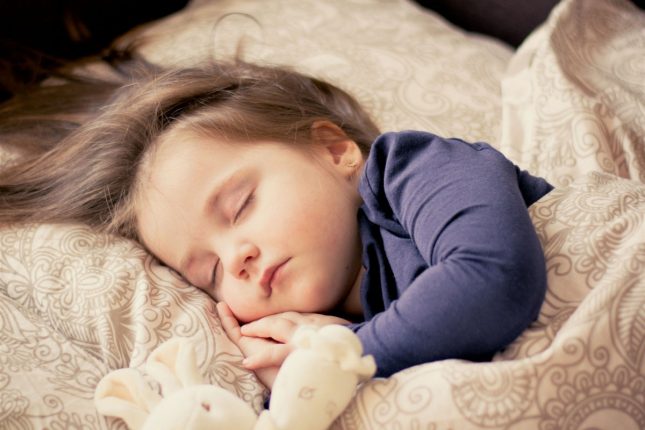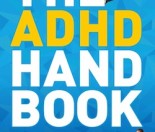In response to a reader comment on our Nightmares and night terrors article, Kiwi Families reached out to our Facebook community for advice. As always, we got some amazing feedback we thought we’d share. In fact, we got 9 great ideas. Here’s 9 trusted ways for handling night terrors – from Kiwi parents.
In the original comment we posted on Facebook, the reader wasn’t sure if her child had night terrors, or if it was something else.
Her 6 year old daughter regularly yelled in her sleep. And then she would re-enact arguments she’d had during the day in her sleep too. Eventually the 6 year old would get out of bed, and go to her parent’s room, saying she’d had bad dreams. But the child appeared to be sleep walking when she did this!
The poor mother of this child was exhausted from being woken up every night. She’d tried a few different things already, but nothing seemed to work. We hope one of these great ideas from parents who’ve handled night terrors with their own children did the trick.
11 trusted ways for handling night terrors – from Kiwi parents
1. Just wait it out
Wayne jumps straight into the Facebook conversation to call this situation a case of the ‘night terrors’ (as did a few others). We agree. Although this child seems to be having nightmares, night terrors and sleep walking all at the same time!
He suggests parents just relax and wait for the child to grow out of it. Wayne points to this useful Wikipedia article. It says that for most children the night terrors will just subside, and further treatment isn’t required.
This is certainly true, and your first course of action might just be to ride this phase out. But, if the night terrors aren’t getting any better, and your lack of sleep is getting worse, you might need another intervention.
2. Don’t skip the pillow talk
Kim had a great idea, pointing out the ‘unresolved’ issues the child seems to have. She suggests helping to resolve those issues. Perhaps over dinner, or when you put the child down.
‘Mum Doc’ Kathleen Berchelmann on ChildrensMD makes this her first point for resolving sleep anxiety in children. She advises us to not, ‘skip the pillow talk’:
Tell your child in advance that you want to spend some special time with them but that you can’t stay too long. Then listen. Try not to talk too much. Sometimes the listening alone will allow your child to solve their own worries.
3. Swap the screen time for family time
Ladonia picks up on resolving some of the child’s issues before they go to bed too. Unlike the one to one approach of pillow talk though, she suggests some quality family time. Specifically she says to make sure your child isn’t watching any grown up programs, like the news. And instead to switch off the screen and try a family board game instead.
This is simple, but sage, advice. Screen time has been linked to poor sleep routines, which could trigger the night terrors. The National Sleep Foundation says that technology before bed can suppress melatonin (the sleepy hormone), wire a brain to stay alert and cause up to an hour’s lost sleep per night.
On the other side of the coin, quality family time provides a raft of health benefits. Gail Fernandez at the Child Development Institute notes 5 key benefits to quality family time. 3 and 4, in particular, are useful benefits for working through unresolved issues:
- The child feels important and loved.
- The child has an opportunity to model parent’s behaviour.
- The parent can observe and learn about the child’s strengths and weaknesses in order to better guide them.
- The child has a chance to voice their thoughts and feelings.
- The parent and child develop a stronger bond.
4. Could it be your child’s spine?
Colleen was advised by her own oesteopath to try out a child oesteo, in particular cranial oesteopathy.
Her son had a very similar case of the night terrors. She took him along to 3 sessions at the oesteo, and never had an issue after that. The reasoning behind how this works is fairly sound. An undiagnosed spinal misalignment could certainly disrupt a child’s sleep pattern. This could be enough to ‘wake’ the child into a night terror situation.
Ben Wakeling, over on Huff Post UK, is clear this is no miracle cure for restless children, however. But in his article Cranial oesteopathy: Can it help your child sleep? his family found success with the treatment. Many parents are dubious about the science behind oesteopathy. But many other parents report positive results. So this one could be worth giving a go.
5. Could it be your child’s room?
Ana chimes in to say her child had suffered from very bad night terrors after the 2011 earthquakes here in New Zealand. This makes a lot of sense, as bad cases of night terrors have been linked to anxiety in children.
She went on to say when they took their child away on holiday, the night terrors went away too. He had them occasionally when they returned, but never as bad. Anxiety can be caused by lots of different things. But why not start with your child’s room. A nightlight, a new bedtime routine, or even a new paint job or room makeover, might help reduce the anxiety.
If you think your child may be too scared to sleep in their room well. You could even try a different room altogether. Bunk them down with a sibling, or even a stretcher in the lounge. Just don’t bring them into your room, or that sleep deprivation will just get worse!
6. The heat is on
Jane turns up the heat by suggesting we turn the heat down. This is great advice actually. Heat is a trigger for night terrors.
So think about all the different heating elements in your child’s room. A heater left on, electric blanket or hot water bottle used, thermal PJ’s, too many blankets on the bed, a hot bath before bed. Even a child’s own body temperature can raise the bed temp by a degree or 2.
The Plunket guidelines for a child’s bedroom temperature is 18 degrees. This is a little cooler than you might think, especially when you’re cold in the evening, and your ambient house temp is 22-23 degrees. So try turning the heat down, and see what happens.
7. Anxiety
Alli goes to some lengths to explain how her child’s night terrors were linked to the anxiety he was experiencing.
In fact, anxiety can cause a whole heap of sleep issues (in children and adults!). But getting to the root of anxiety issues in children can be quite difficult. It could be something obvious like bullying at school. But could be something much less obvious, like the thought of having to get their hair brushed in the morning.
Alli suggests trying rescue remedy. Bach Flower remedies are totally safe, and specially formulated for kids. It’s available at lots of online stores, so easy to get a hold of. We’d also suggest combining the remedy with breathing exercises before bed, check out Teaching your toddler deep breathing. This could be a really powerful combination.
8. Lavender oil
Jeena also recommends trying rescue remedy to reduce anxiety, and promote sleep. She’s also a huge proponent of lavender oil. She suggests bathing your child in a bath with lavender oil, and giving them a rub down with a lavender infused massage oil before bed.
Kate Johnson at The Kitchen EO is a huge proponent of essential oils for health and wellbeing. She suggests lavender and cedar oil mixed can be useful for inducing sleep:
I love the whole of life support the essential oils can offer. lavender + cedarwood at bedtime helps in bringing down wired minds (big and little).
She goes on to suggest you can massage the oil with a roller on the balls of the feet, or back of the neck, diffuse the oil, or place a drop on your child’s third-eye. It’s meant to be very calming to the mind, and definitely worth trying out at your place.
9. Is your child overtired?
Maureen was the last reader to chime in, with a simple but very useful comment. She says her son gets night terrors when he’s overtired.
Dana Obleman at SleepSense.net says night terrors are actually one of the signs of over tiredness. She also suggests that night terrors can add to the problem of exhaustion in the child, as they’re not getting a full night’s sleep.
This makes a lot of sense (excuse the pun!). We used a sleep consultant with our first daughter, and her mantra was ‘sleep begets sleep’. This just means that the more, and better, sleep a child gets, the more, and better, they’ll sleep. And it was totally true. The more we were able to get her to sleep through the night, the more she slept through the night.
So the reverse of this would also be true. The less your child sleeps through the night, the more exhausted they are. This leads to over tiredness, which causes your child to sleep even more poorly. To break the cycle of poor sleep with your child, check out Dana’s Sleep Sense program, or check out some of our other sleep articles.
That’s the 9 trusted ways for handling night terrors as suggested from Kiwi parents. We hope some of the ideas above help your child with their sleeping issues. If you’ve experienced, and survived, night terrors with your child, we’d love you to comment with your ideas below. If you’re currently dealing with the issue you might want to check out our Nightmares, night terrors and sleep walking – What are they? article.







